Kraken attacks: the story of the Defence Intelligence unit that the Russians have demonised
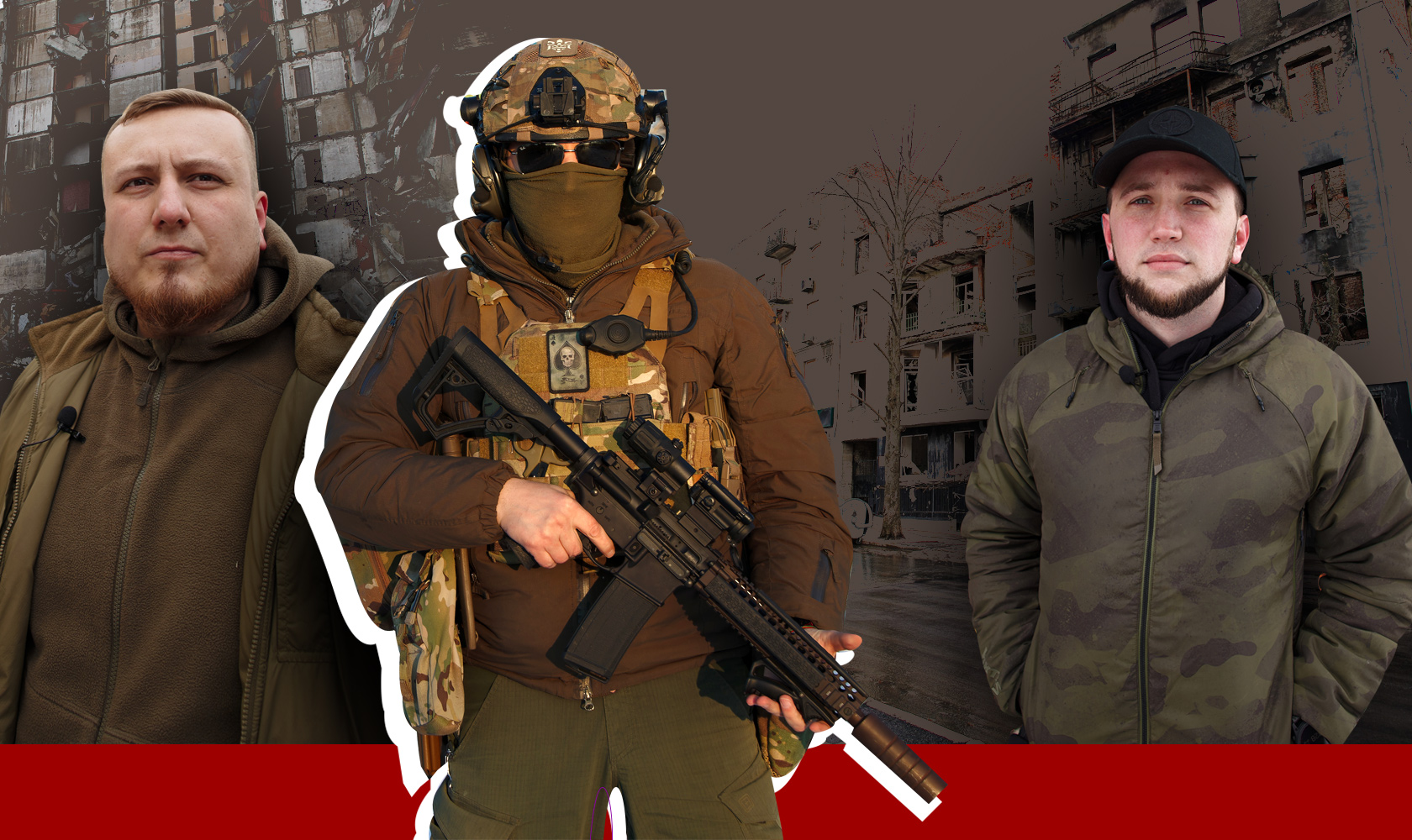
In the first half of February 2022, two weeks before the Russian Federation’s full-scale invasion of Ukraine, two interconnected events took place in Kharkiv. First, officers of Ukraine’s Defence Intelligence carried out some so-called additional intelligence measures here. A little later, "hideouts" appeared – hidden places stocked with arms.
The Kalashnikov rifles, grenades, several heavy machine guns, anti-tank grenade launchers and even anti-tank guided missiles would come in handy for intelligence officers, local Azov veterans, Ultras (football fans) and ordinary volunteers on 24 February.
Many of them would later be wearing the chevrons of Kraken Defence Intelligence – the special unit that conducted a counteroffensive in Kharkiv Oblast – on their uniforms.
"We knew the war was coming and we were making preparations," says a Kraken unit commander who goes by the alias Vito.
The unofficial community Kharkiv Defence Headquarters, which activists had started organising in 2021, obtained arms from those hideouts on the evening of 23 February 2022.
One of those who were gathering volunteer soldiers together was Kostiantyn Nemichev, now an officer in Ukraine’s Defence Intelligence. A former soldier in the Azov Regiment, he was then the head of the local National Corps.
On the morning of 24 February, there were about 450 people in the headquarters, and by noon there were almost twice as many. There were not enough weapons for everyone.
The first trophies, including a Tiger infantry fighting vehicle, appeared on 27 February after a battle with Russian special forces that were hunkering down in School No. 134.
Serhii Velychko, 29, an Azov Regiment veteran known as Chilli who thought up the chant "Putin is a dickhead!", joined the Kharkiv defenders at the end of the month. On 24 February he was in a pre-trial detention centre under suspicion of extortion and setting up and being involved in a criminal group.
A few days after Russia invaded Ukraine, Velychko was included on a list of people who were granted amnesty by President Volodymyr Zelenskyy to defend their country.
Chilli, who like Nemichev is now an officer in Ukraine’s Defence Intelligence, said in an interview with the Bombardyr YouTube channel on 8 April 2022 that he had ended up in remand because of his complicated relations with pro-Russian forces and the Ukrainian security services.
12 months after the full-scale invasion began, in a film by Dmytro Komarov marking a year of the full-scale war, Defence Intelligence Chief Kyrylo Budanov called Kraken "one of the most battle-worthy units" in Ukraine.
Storming the positions of Russian forces from Vilhivka to Kupiansk and beyond, the unit has acquired trophy tanks, infantry fighting vehicles, armoured vehicles and artillery – from mortars to D-30 howitzers and Grad multiple-launch rocket systems.
"Why Kraken? In March, after the assault on Vilhivka, I saw that a unit was starting to form out of these people. I suggested naming it Kraken. I served in the Naval special forces, so a sea theme is very close to me," Vito says, explaining the origin of the unit’s name.
"Kraken is a beast in Scandinavian mythology that destroyed everyone."
Ukrainska Pravda journalists spent several days with fighters who took part in the Kraken unit’s assault operations. They described and showed how they pushed the occupiers back from Kharkiv and liberated Kharkiv Oblast within the Defence Forces.
The beginning: Kalibr cruise missiles and prisoners in the Oblast State Administration building
A middle-aged man who blends into a crowd – that’s probably all that mere mortals are allowed to know about what the Defence Intelligence officer known as Vito looks like. At my own risk, one small detail can be added – he smokes IQOS.
"It was calm in Kharkiv – no one believed there would be a war. On 22 February, my colleague and I arrived at a meeting called by [Roman] Dudin, who was the Chief of the Security Service of Ukraine in Kharkiv Oblast [now suspected of treason – ed.].
I was invited to speak. I said, ‘There’s going to be a war, we need to get ready.’ Everyone laughed.
Then we had a meeting with [Pavlo] Fedosenko, Commander of the 92nd Brigade. We agreed on how we would work. We met National Guard officers, too, from the Omega special unit, and discussed next steps."
Vito is thinking back to the start of the full-scale war in the very place they had chosen as a gathering point even before 24 February – on Danylovskoho Street, between the court and some Soviet-era apartment blocks.
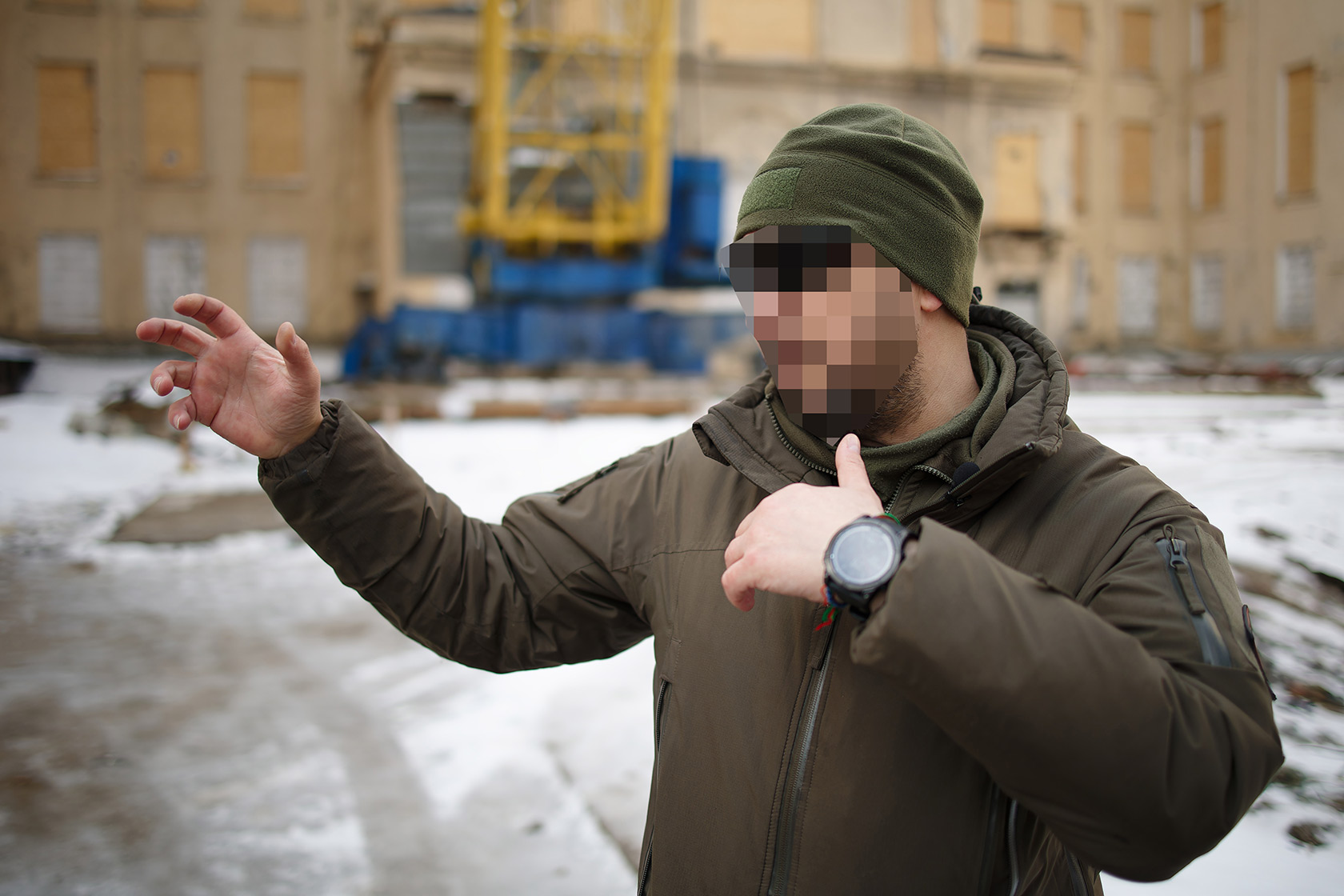
Members of the resistance movement were afraid that the Russians would shut the connection down. But the so-called second-greatest army in the world appeared to be not as almighty as that.
"Kostia [Nemichev – ed.] took people on, formed the groups, gave out arms, and sent volunteer soldiers to their positions.
The 92nd Brigade from the northern and north-eastern fronts was the first to engage in the fighting – they retreated to a ring road. We realised how the Russians would act and started arranging fire ambushes. It turned out to be a hemisphere along the ring road that we backed up with the soldiers we had," Vito says.
The Defence Headquarters was located in the Oblast State Administration building where volunteer soldiers signed up for service and where clothes and food were brought. On 1 March 2022 it was hit by two Kalibr cruise missiles, and 29 people were killed, according to the official figures.
"That was when I personally experienced what Russian missiles are like," smiles Vito, who was holding a meeting on the first floor at the time of the attack.
The attack also killed two reconnaissance soldiers from the Russian 2nd Guards Separate Special-Purpose Brigade, who were in Ukrainian captivity at the time and were being held on the ground floor of the building.
Before the strike they had revealed their combat missions – capturing a TV tower, one of the state connection facilities, and key administrative buildings; reporting they had control over the "first capital" of Ukraine; and waiting for Russia’s main forces to arrive.
"During the first few days, we set up 32 groups that, together with other units, pushed the Russians back. After that, they [the Russians – ed.] hit the Oblast State Administration, our headquarters, with Kalibr missiles. In my opinion, they were trying to hit us," Kostiantyn Nemichev recounts.

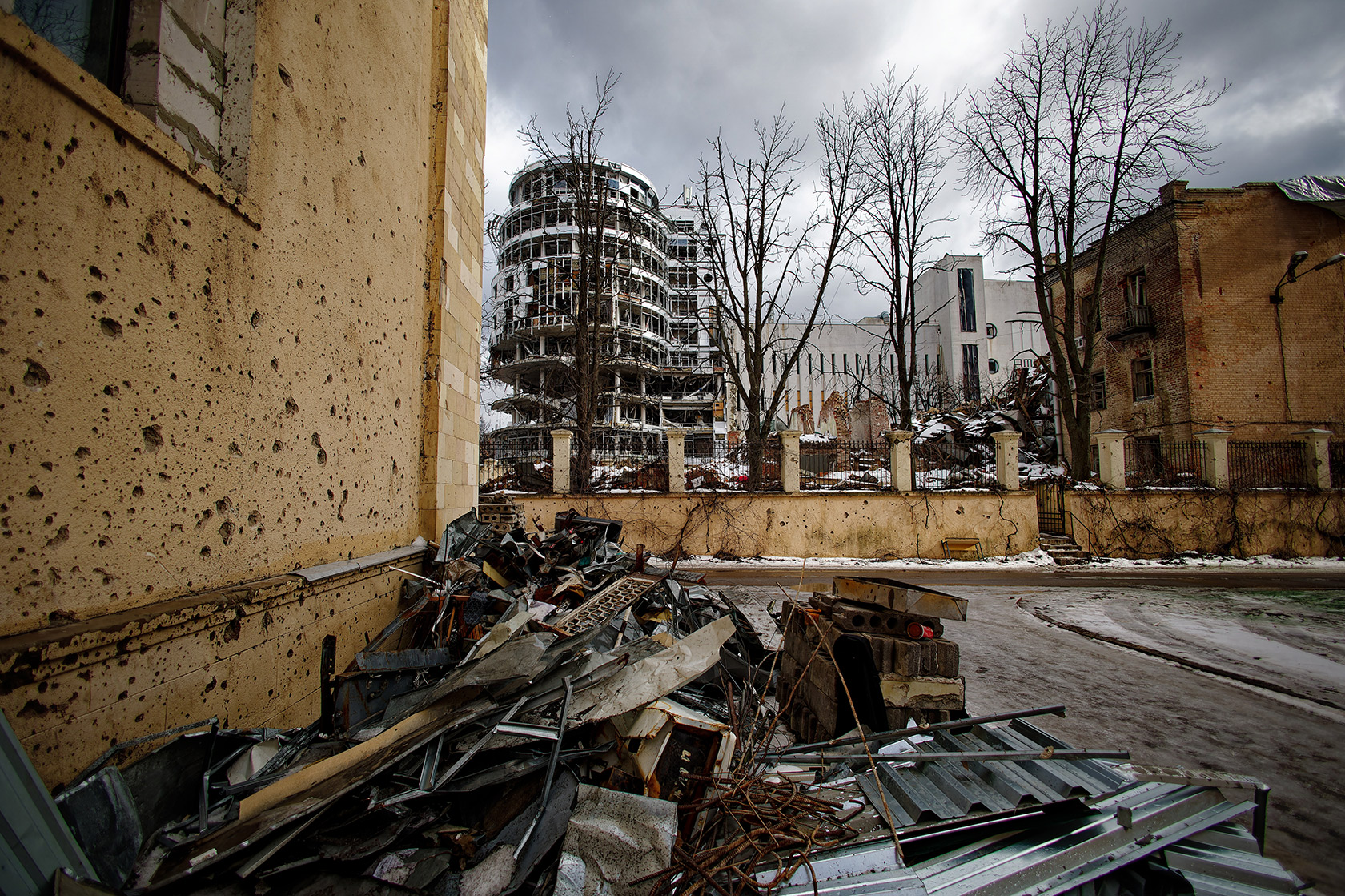
The Saltivka line: a flank ambush and a traitor
"The oldest one of us is the chief of communication. He’s 69 and a Lieutenant-Colonel," Vito says as he drives an off-road car towards Northern Saltivka. "He can do ten pull-ups. He climbs up a chimney like that one [Vito points at a boiler house through the window – ed.] under fire and hangs a retransmitter up. How about that for an old man!
The youngest of us is 15. He’s a boxer, an assault fighter. He’s going to enrol in the Ivan Bohun Military Lyceum this year," he adds.
During the early days of the full-scale invasion, professors and students from Kharkiv’s National Air Force University and the Law Academy defended Kharkiv’s Saltivka district along with Azov Regiment veterans and volunteer soldiers.
"That’s what the combined 78th battalion was like. I brought their people here – around 120 soldiers. Fizruk [an alias] was their commander, he had combat experience.
Here, the first tank of the 92nd Brigade was here on back-up. And there, a little further on, the 22nd battalion was already fighting," Vito points out.
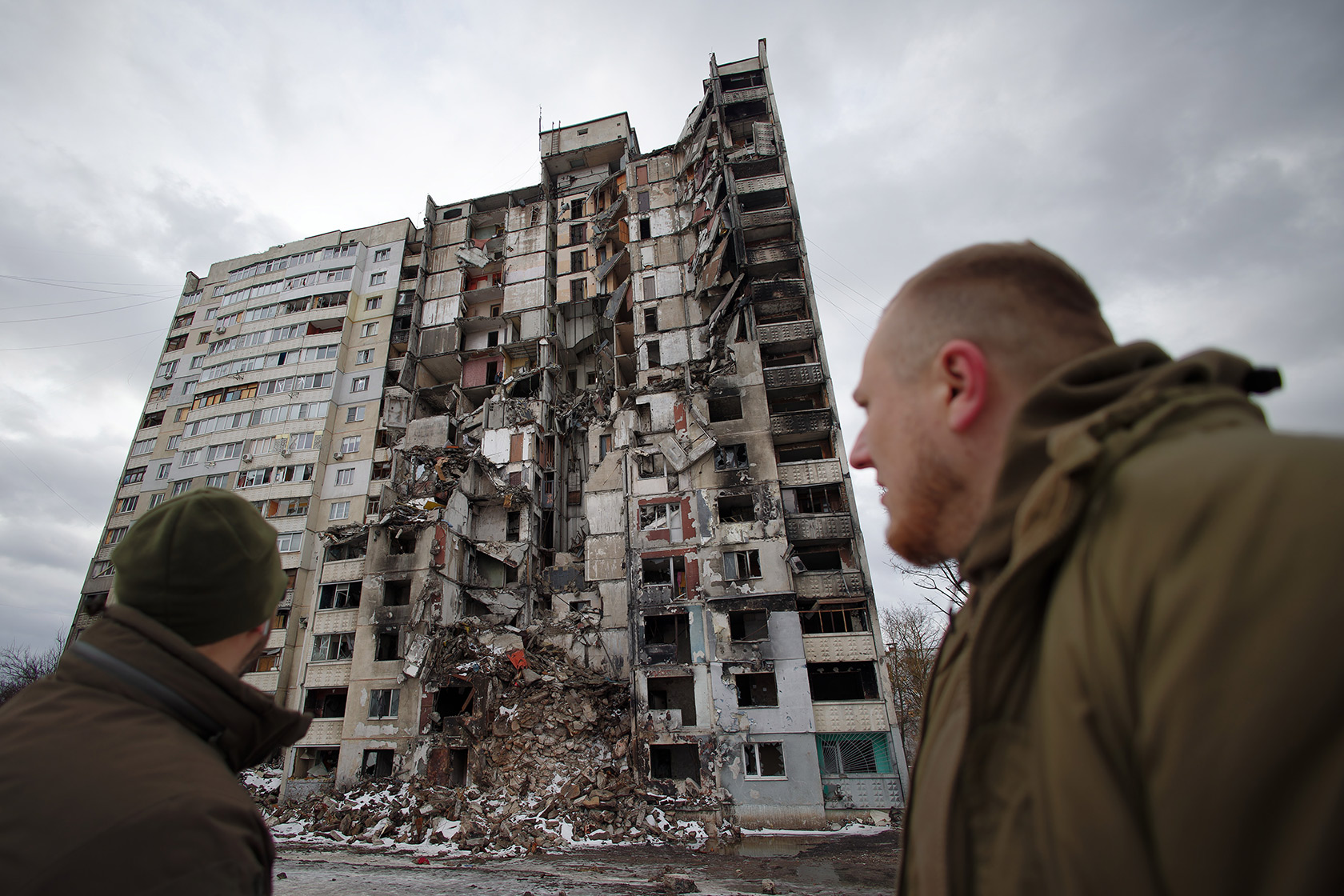
In addition to the university detachment, about 150 soldiers from the civil defence headquarters were guarding the road to the city on the Tsyrkuny village side along Serdiuk Street – a total of 300 defenders.
"There was an ambush, an 'intestine' [a defile]," Vito recalls. "There were about 50 grenade launchers ready to launch a flanking attack from windows and arches. An anti-tank guided missile (ATGM) was put on the roof.
One of the university officers turned out to be a traitor. Paradoxically, he helped us to some extent. He told the enemy who was here and what forces and equipment we had. That's why the Russians were afraid of coming this way. We would have burned them here."
The first week of Kharkiv's defence was the most complex and decisive. After getting stuck on the ring road and encountering fierce resistance, the Russian forces started a massive bombardment.
Dark days now descended on Kharkiv’s Northern Saltivka district.
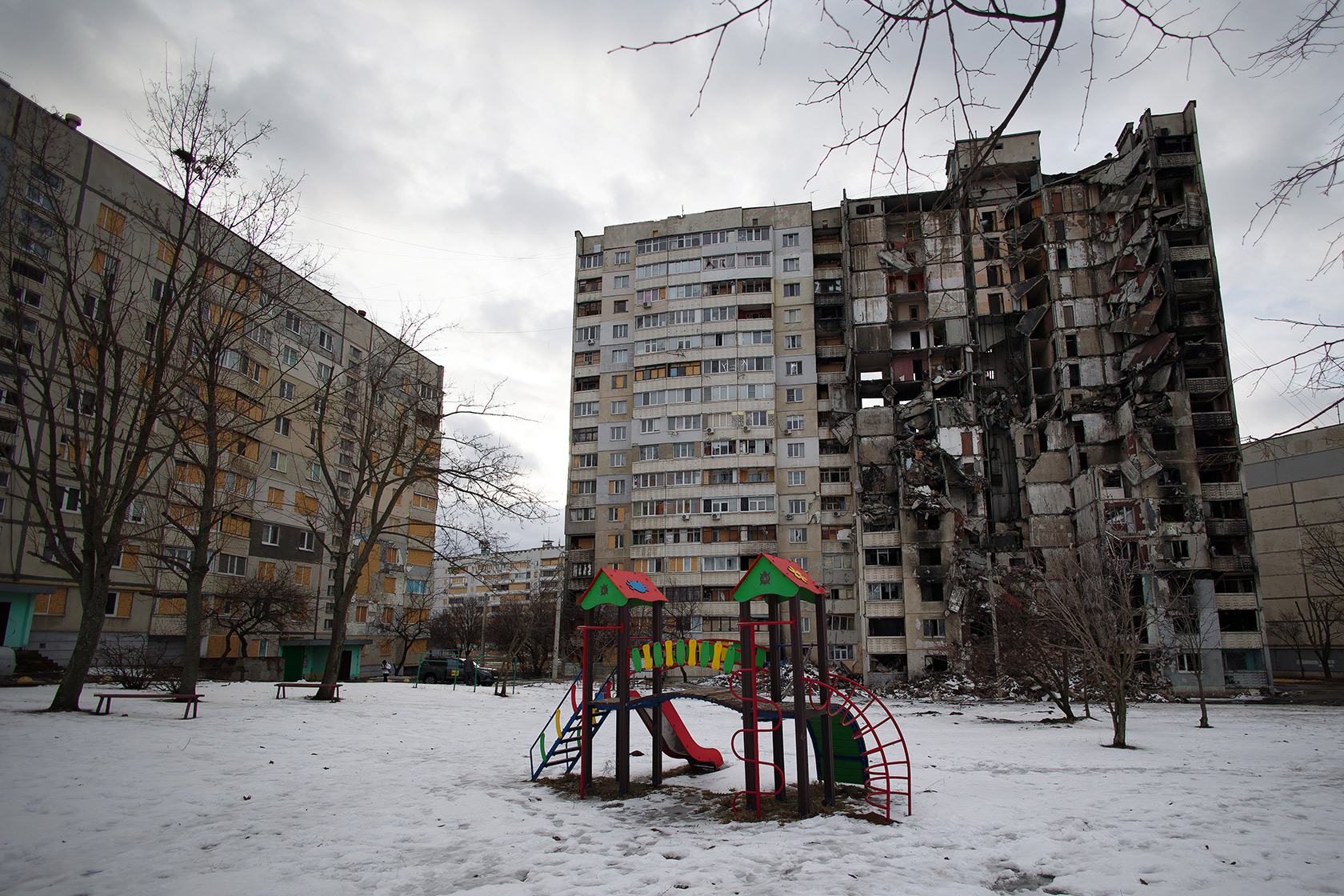
"The enemy used everything they had," Vito says. "Tubed and rocket artillery. Aircraft and helicopters.
They dropped a FAB [a high-explosive air-dropped bomb – UP] over there, but it didn't go off. And there, that was where Fizruk's guys shot down the first helicopter. They went up onto the roof, to the 16th floor.
There are only 13 floors left," Kostiantyn Nemichev notes.
School No. 134: a lesson for the Russian special forces
On the morning of 27 February 2022, the Pskov special forces made a disastrous manoeuvre. Several sabotage and reconnaissance groups broke through to Kharkiv.
Vito says that the Russian troops came from the direction of the village of Mala Danylivka through the woods and along such confusing streets that no one was expecting them on that side.
"I think one of the locals must have shown them the way," he says. "Even Kharkiv residents can get lost there."
The Russian soldiers entered the city in Tiger infantry mobility vehicles (IMVs) and "capsules", i.e. armoured KAMAZ trucks. Four Tigers stopped on Shevchenko Street, 5-6 km from the centre, outside school No. 134, which specialised in German.
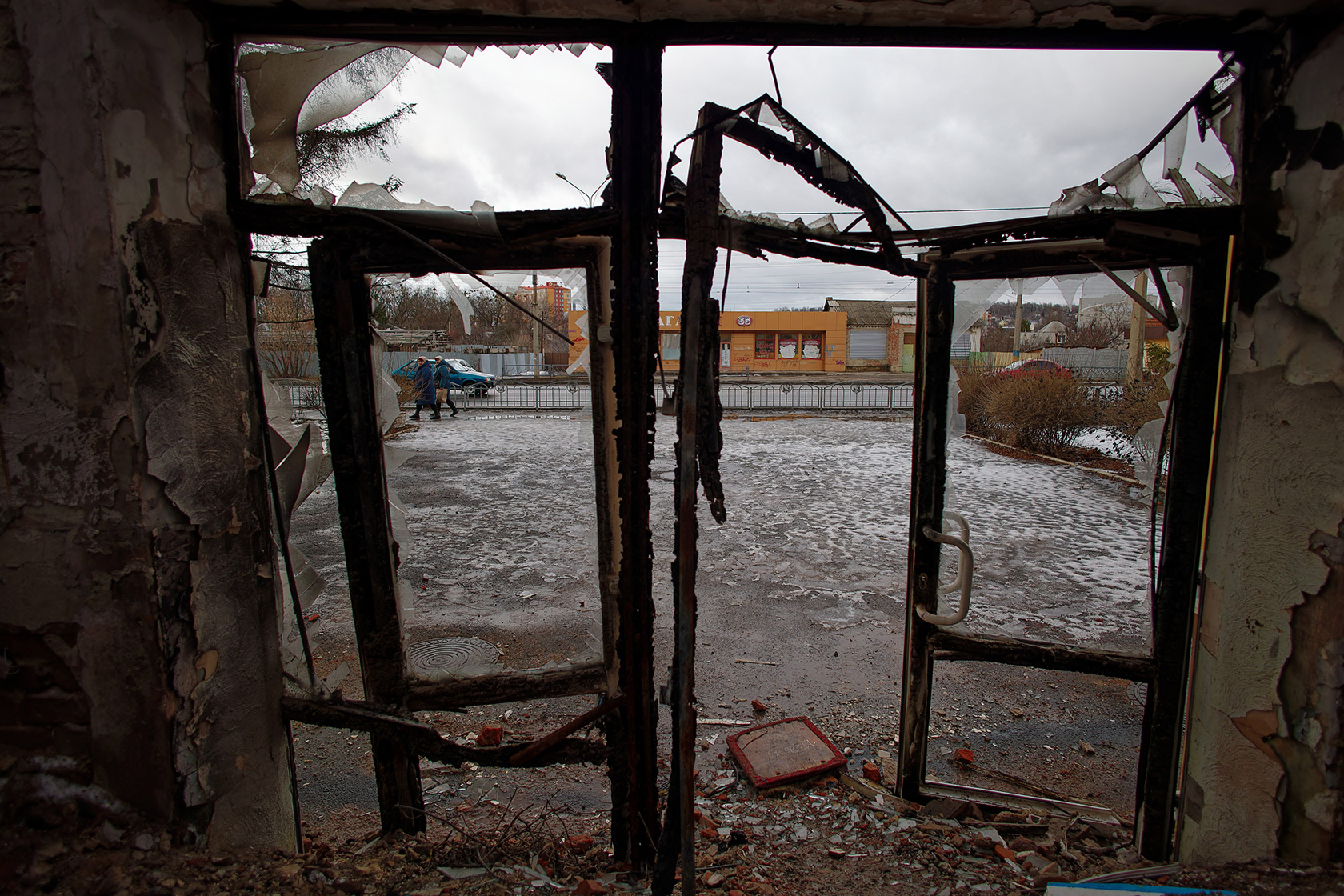
The building was being held by three dozen Russian special forces soldiers, and the Ukrainian soldiers from the 92nd Brigade started to fight them. They were joined by Ukrainian Kord special forces unit troops, Frykor military volunteers, Azov Battalion veterans, and territorial defence forces.
"The Russians had inaccurate data and sh*tty planning. If their intelligence had done their job properly, maybe these armoured groups could have done something," says Rava, 30, from the Kraken Regiment.
Rava is a native of Kharkiv and a former member of the FC Metalist Kharkiv Ultras. That day he was with the combined forces which stormed the school the entire day.
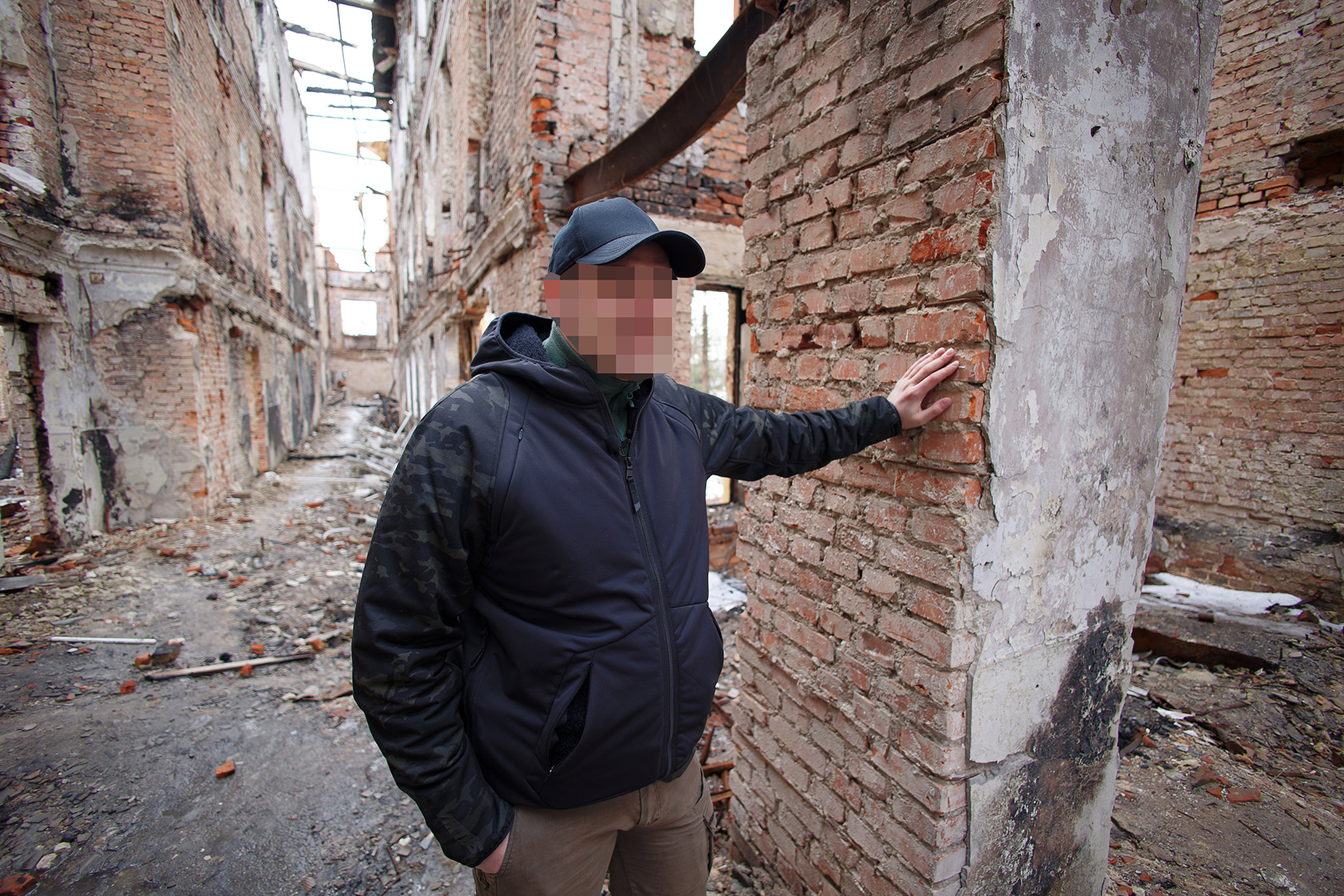
"There were well-trained special forces with large-calibre machine guns and RPGs (rocket-propelled grenade launchers)," Rava recalls. "Kord and Frykor tried to storm [the building]. The Russians put up a good defence. Even getting to the ground floor was challenging, as there were so many corners, doors, rooms, and corridors.
The vehicles of the 92nd were a great help. An armoured personnel carrier (APC) and a tank engaged [the Russian troops – ed.]. The first prisoners of war were captured with the help of the large calibres, and the rest were killed.
You only had an assault rifle and four spare magazines," Rava adds. "You went into battle purely on your own motivation. It wasn’t until later that the ‘lend-lease’ started up. [As they fled, Russian forces left so much of their equipment behind that the Ukrainians mockingly called it a lend-lease.] That was when Tiger IMVs and large-calibre machine guns appeared."
"We had a situation where we went up to the second floor and had to throw a grenade," says Dmytro Oliinyk, 28, from the Kraken Regiment, who also took part in the assault, "and one man said, ‘I can't do it!’ He gave it to me, and I threw it.
If you can, you do it. If you can't, you back off. It’s either shoot or be shot.
Did we know there were special forces there? We were all on autopilot. We had to secure the school and drive the Russians out of the city."
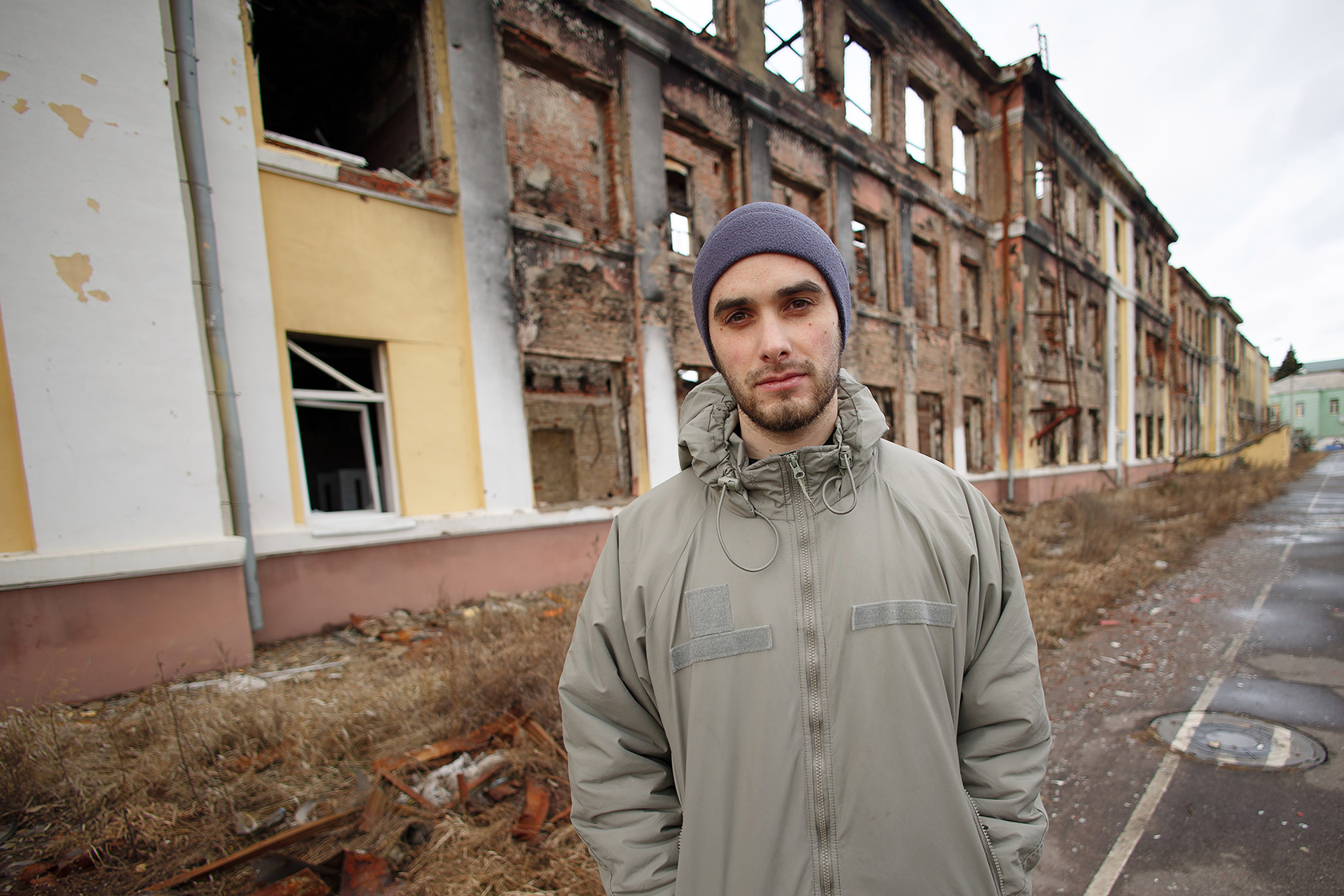
A year on from the assault, Dmytro came to the burned-out building. He walks with a limp – he was wounded in the leg here.
Dmytro calls himself an ordinary man, just a citizen of Kharkiv. He doesn't look like an assault trooper. He qualified as a football coach and then got a law degree. In 2014, he went to Donbas as a volunteer. But he had no military experience.
"Our ordinary guys, members of the defence headquarters who’d trained before the 24th [February], are morally stronger than those Russians. They know that they are defenders," Dmytro says.
Kostiantyn Nemichev says the battle at school No. 134 was a key one for Kharkiv.
"That was the point. They realised that Kharkiv is reinforced concrete. That there was nothing they could do here."
Vilkhivka: a phenomenal assault and an old man’s "courgettes"
On 27 March, a month after the battle at school No. 134, the occupiers were driven out of the village of Vilkhivka, 6 km from the ring road.
"That major operation started a week before with a small one," recalls Serhii "Chilli" Velychko. "A small group moved to their checkpoint with an APC. The guys had an NLAW (ATGM), our first time using foreign weapons."
Chilli says the NLAW "didn't work well" and "went a little sideways". But the Russian forces ended up with several wounded. The Kharkiv assault troops retreated to the city. After the raid, they carried out reconnaissance and checked the approaches and traffic routes.
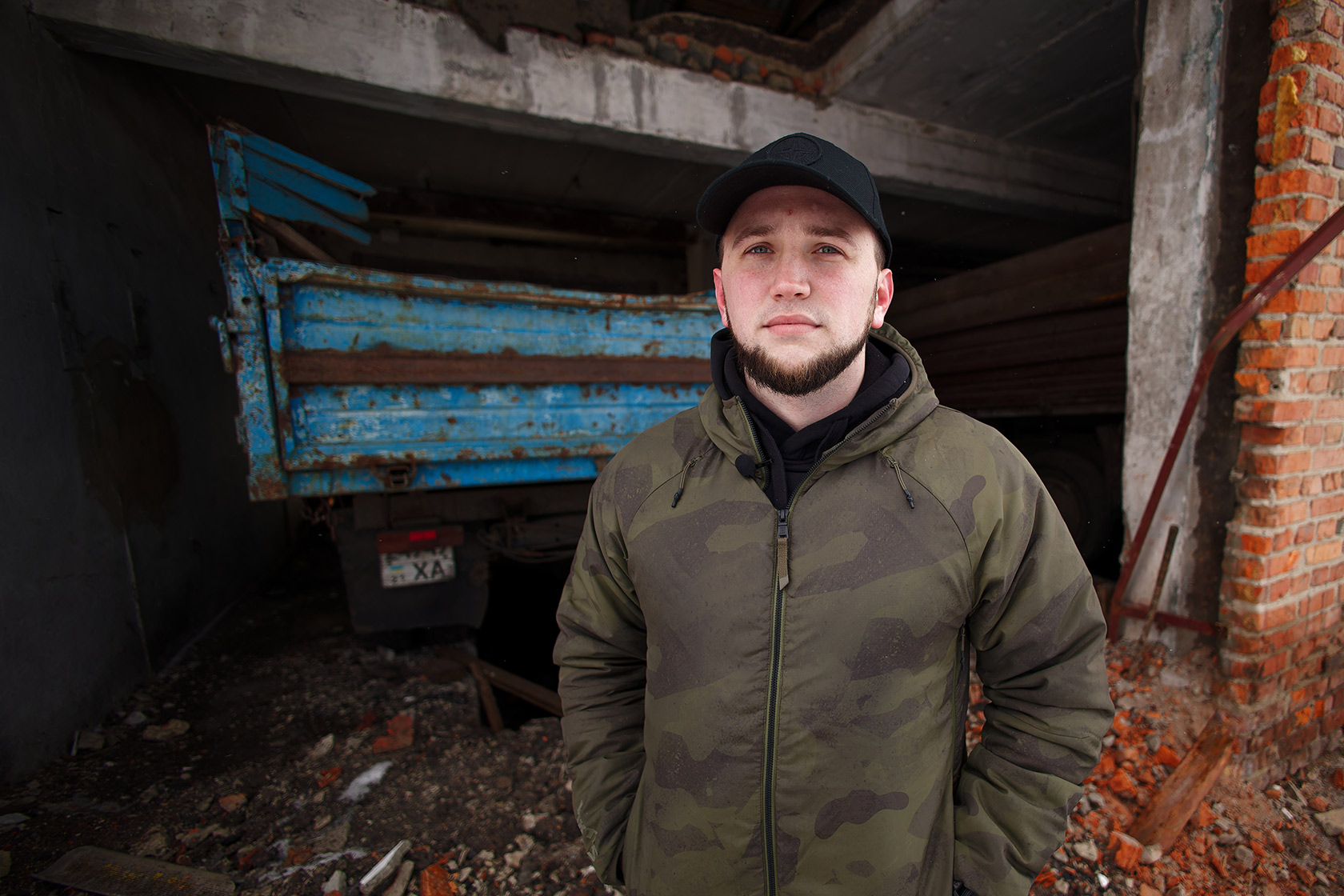
The small village of Elitne became a foothold for the offensive. At the time, it was in the "grey zone". The soldiers of the future Kraken special forces regiment set up their first field headquarters there. They collected and analysed data from a drone, stocked up with ammunition, and then brought the wounded and prisoners of war there.
Chilli smiles as he recalls how they broke through the Russian positions at the crossroads before Vilkhivka: "We were travelling like a 'gypsy camp'. Back then, the troops had only one trophy Tiger IMV. The rest were civilian jeeps and cars.
On both sides of the road, there were dense thickets, and they were coming from the direction of fire," says Chilli. "We realised there were trenches, and the Tiger couldn’t reach them. So he bravely drove into the trenches and started shooting at them [the Russian troops].
That’s when our first guy, Artek, was killed. He was in a pickup truck, shooting from an AGS [automatic grenade launcher – UP]. After he was wounded, he carried on fighting the Russians."
APCs from the 92nd Brigade supported the second column. As the assault troops consolidated in sectors of Vilkhivka, tanks, artillery and K-52 helicopters started to attack the village.
"Everyone, perhaps for the first time, felt the power of the aircraft," says Vito. "There was even a FAB drop, but that was further away, near the forest plantation."
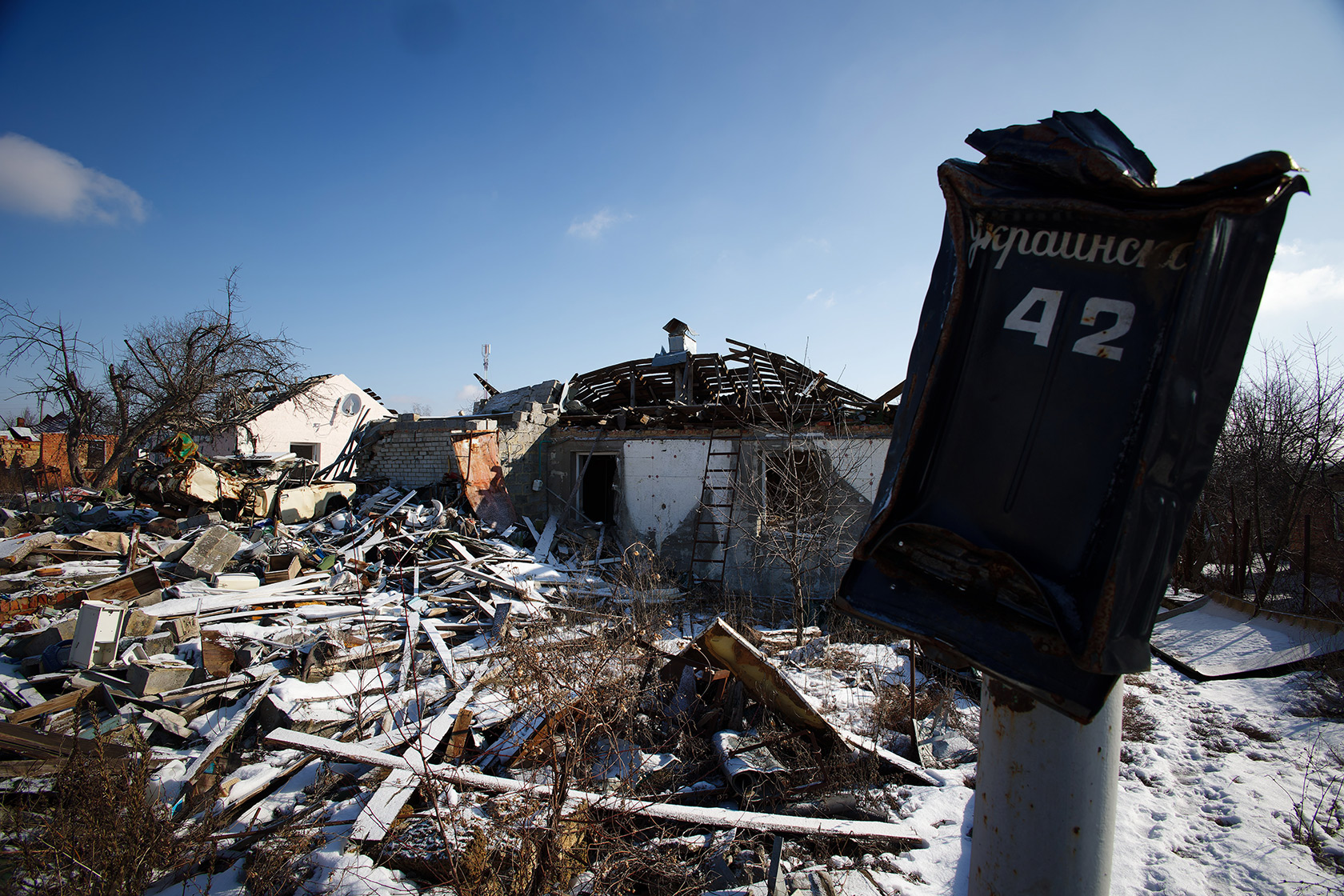
At the same time as the military volunteers' offensive on Vilkhivka, the 92nd Brigade had been driving Russian forces out of the village of Mala Rohan. Their main objective was to open up the logistics along the Kharkiv-Chuhuiv-Izium-Kupiansk road.
"What was the conclusion of the Vilkhivka operation? Considering the forces and equipment we had, it was phenomenal," says Vito.
"Most importantly, there was no loss of control, even when the assault groups were semi-encircled for a while. We didn’t have repeaters then; we worked on point-to-point radios through different channels. Everyone had two walkie-talkies; I had three.
We captured a lot of prisoners here [30 – ed.] and killed a lot [up to 80 – ed.]," recalls Vito.
"We didn't even know what to do at first, how to get them out," Chilli adds. "All the groups were fighting then, and many of the guys' personal vehicles were burned out."
The Russians, remembering their national tradition, made the same mistake in Vilkhivka. They had not learned their lesson a month ago. Some of the Russians in Vilkhivka barricaded themselves into a local school, just as they had in Kharkiv.
Armoured personnel carriers from the 92nd Brigade helped to storm them, and one of them was hit by an RPG. But the occupiers were unable to escape.
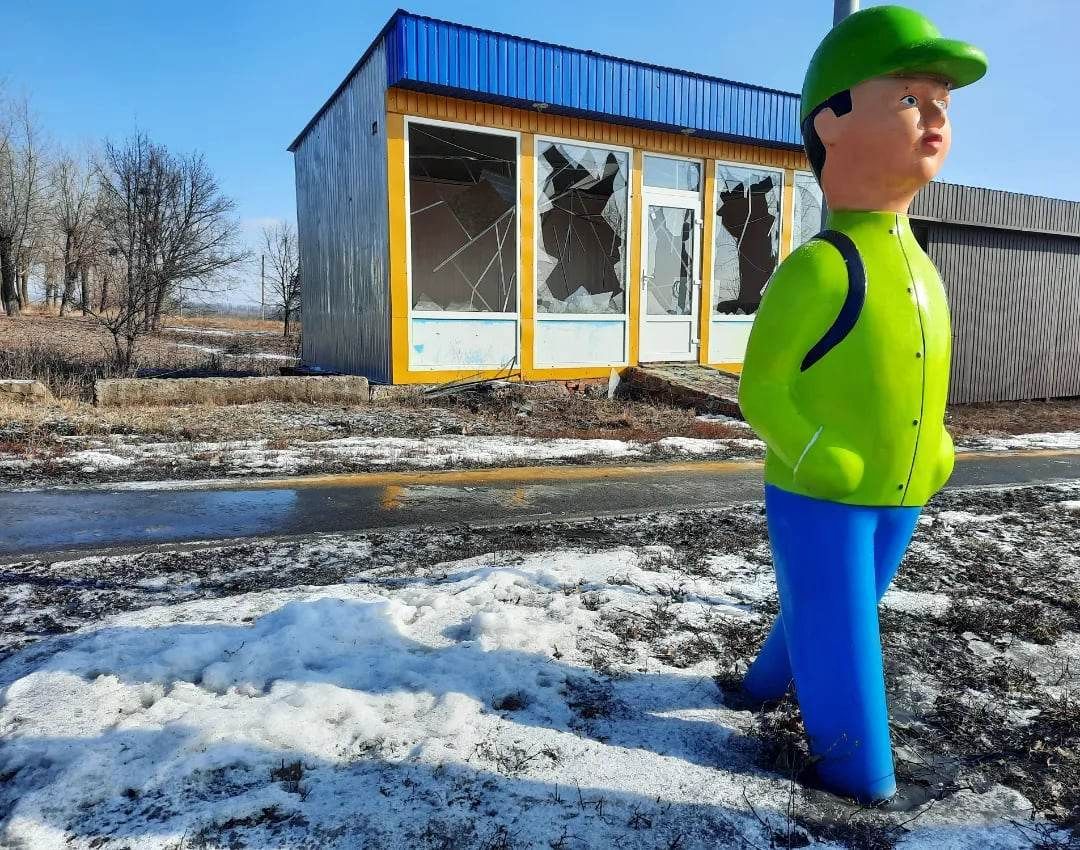
"They were burned in the school," says Chilli. "But they fought us here – they were the ones who started it.
It was a really intense blaze. They were special forces. We lost a lot of ammunition in Vilkhivka, including some trophies.
Suddenly this old man appeared from the basement: ‘It’s our guys! They’re here!’ He was overjoyed.
We said, ‘Everything’s fine, Grandpa. Go and hide!" And he went, ‘Hold on!’ He climbed out of the basement with some ‘courgettes’ – projectiles from Russian RPGs. There were about 20 of them.
Grandpa and I were really lucky. Those ‘courgettes’ really helped us clear out the school and some other positions."
Ruska Lozova: Skif, Budanov and a church as strong point
The Russian Federation reacted to its defeat in Vilkhivka with more fake news. Vladimir Shamanov, a member of the State Duma and former commander of the airborne troops, reported two days later, on 29 March, that Russian special forces had captured Kostiantyn Nemichev and Serhii Velychko.
Accusing Kharkiv residents of torturing prisoners of war, the retired general Shamanov said, "They’re grovelling at our feet right now, begging for mercy." But Chilli and Nemichev recorded a video denying this that same day.
It wasn’t just the Russians who were impressed by the successful storming of Vilkhivka by Azov Regiment veterans, patriots and football hooligans. Ukraine's Defence Intelligence decided to establish a new unit based on these volunteers, who had proved themselves in the defence of Kharkiv and the special operation in Vilkhivka.
The village of Ruska Lozova was liberated at the end of April by the Kraken special unit.
"We can talk about this now – Kyrylo Budanov came for this mission. He took part in the assault," Vito smiles.
The operation started from the village of Lisove, in the grey zone, on higher ground.
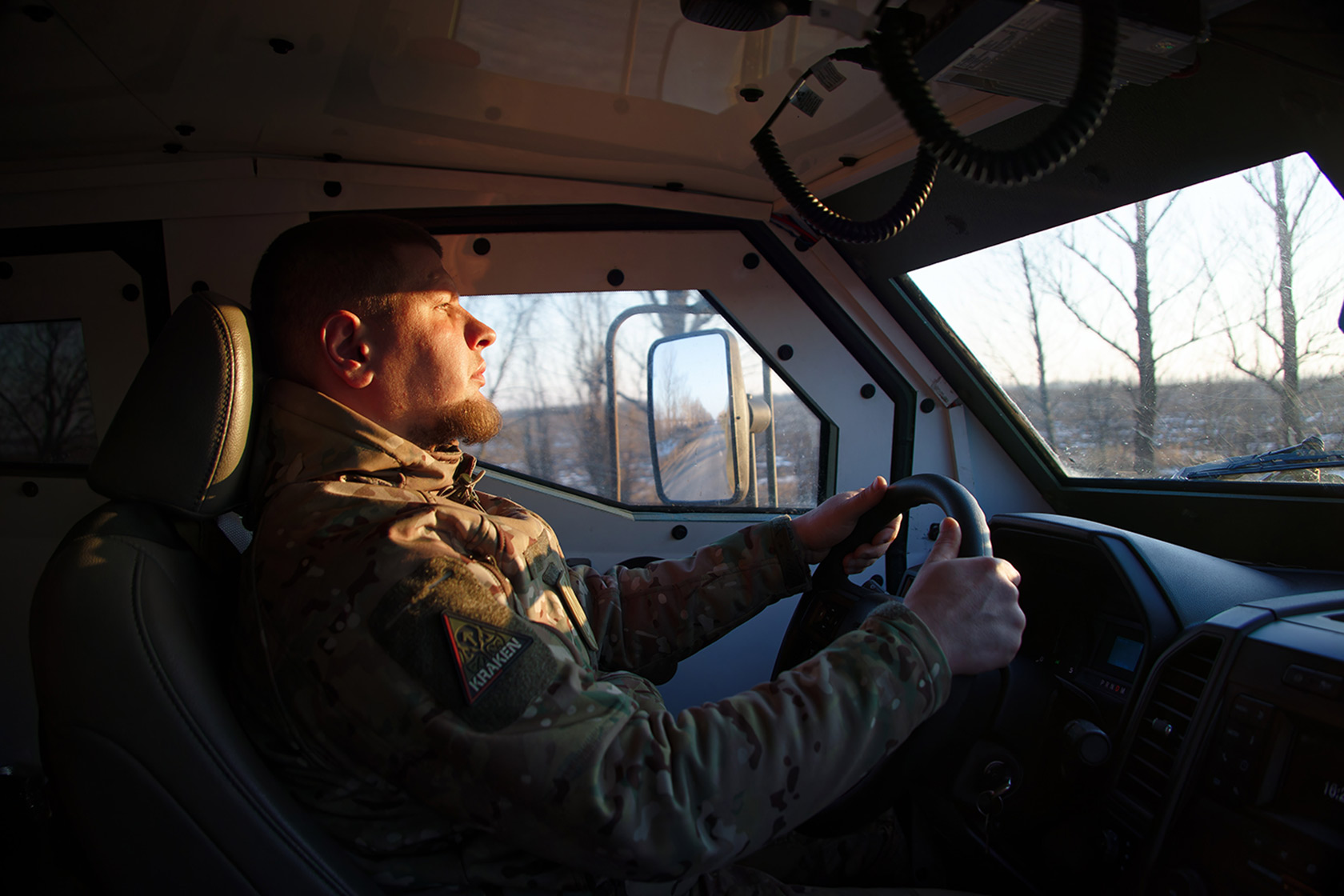
"It wasn’t possible to enter at first. The Russians had blocked the road with APMs [anti-personnel mines – ed.] tied with ropes. They were also using artillery. We had dead and wounded soldiers.
We had to cancel the operation and modify it," says Chilli.
Prior to the second attempt, a group of intelligence agents went to the village and brought back a local collaborator, from whom they learned more about the Russians' forces.
"We had about 200-220 people," says Vito. "They advanced on foot through the forest. While we were doing a diversionary manoeuvre, Battalion Commander Skif [Scythian] moved in with the infantry through the right flank, occupied the designated sectors, and began clearing."
Skif, a burly man in a balaclava who has a good-natured look about him, recalls, "We went through the forest area at night on foot. We were carrying small arms, grenade launchers, and a couple of ATGMs. We walked through the cemetery, cleared the streets, and moved to the centre, where there was a church.
I later chose it as our base. According to the intelligence, it was the only building with a concrete basement where you could hide."
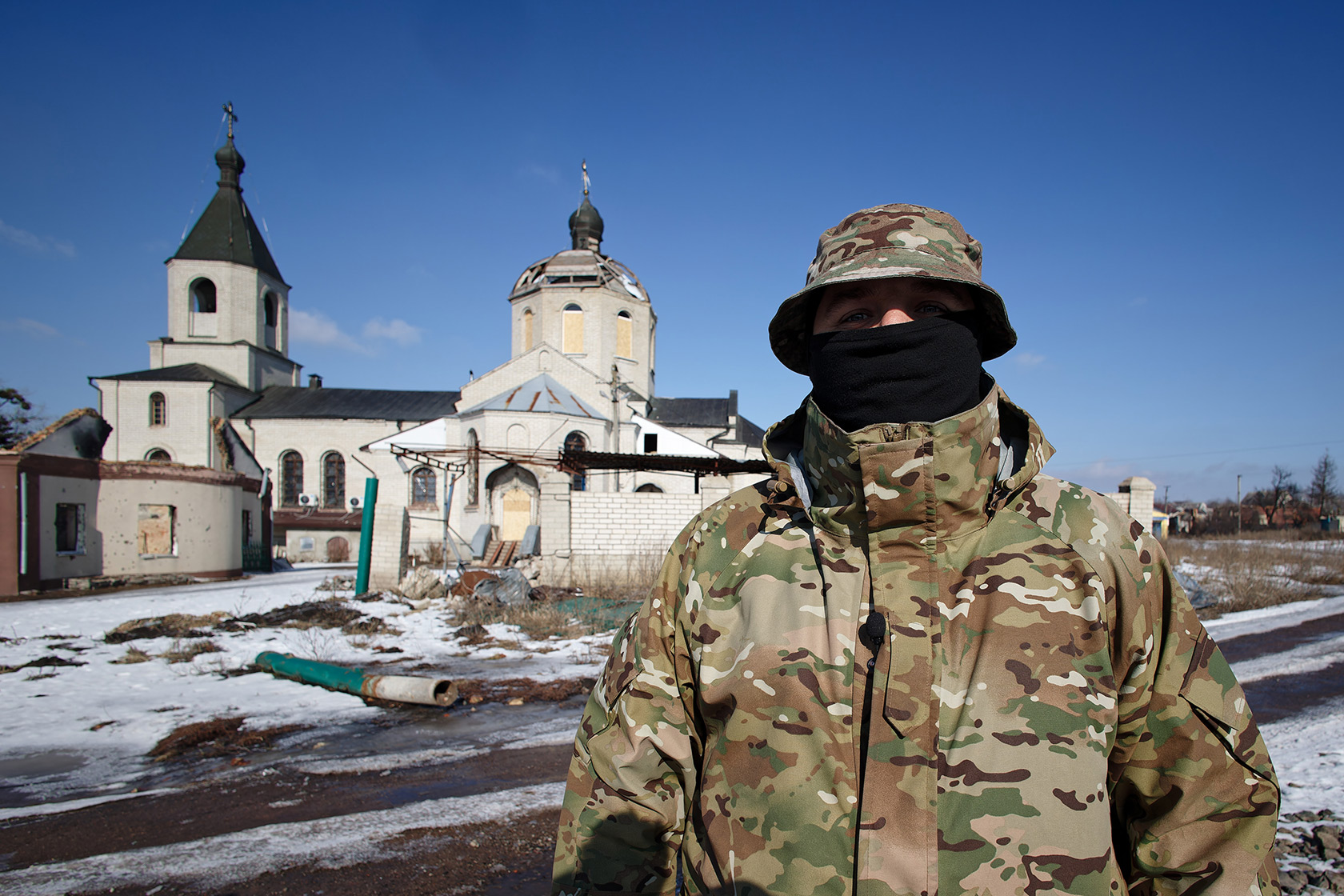
Skif's group was small. The fighters set up positions in the church, which was fired on by aircraft and a tank when Russian armoured vehicles advanced on Ruska Lozova from the Pytomnyk side.
"We set up our positions here for about three days, although we didn’t expect to be there that long," says Skif, who was wounded back then. "We only had food for a day. The locals fed us.
The command was to hold the village until our armoured group and heavy weapons arrived. The guys first set up a walking route through the forest – ammunition was brought on foot from there. And then they broke through on an armoured KAMAZ truck loaded with ammunition and food, and took prisoners."
Ruska Lozova was finally cleared following a breakthrough by the main Ukrainian forces along the highway. The Russians tried to regain their position the next day at 06:00. But they were unsuccessful.
"They started storming our strong point on the highway. The guys and I set off from the centre of the village for reinforcements. Our artillery helped a lot. Several of their ‘boxes’ [armoured personnel carriers – ed] started shooting immediately, on the approach.
The infantry began to retreat. They were probably using an Orlan UAV; they saw our location and began to cover it with mortar fire. That's when I was wounded," says Skif.
Pytomnyk: Height 220 and a tank from Red Square
After liberating Ruska Lozova, the assault troops pressed on to the village of Pytomnyk, 3 km away, where the 200th Pechenga Brigade from Murmansk Oblast, Russia, was stationed.
"Height 220 is the highest point on the northern front," says Vito, explaining the importance of this sector. "From here, the enemy opened fire on Kharkiv with 2S3 self-propelled howitzers, guns, and BM-21 Grads [multiple-launch rocket systems – ed].
The liberation of Pytomnyk, and before that Ruska Lozova, allowed Kharkiv to breathe freely. The enemy suffered very heavy losses here. We heard from intercepted conversations that they lost about 75% of personnel."
The Russians were driven out of Pytomnyk within two days and entrenched themselves on the heights, in the forest, and in the village. But they covered their positions with heavy fire after that. They kept trying to return for a long time.
Vito recalls that during the assault operations, contact battles in the forest were taking place at a 10-20 m range. And then it was time to dig trenches. The Russians even deployed S-300 missiles.
"There was a unique situation here," the Kraken commander smiles. "Fizyk (‘Physicist’, who is now our head of intelligence) and some other guys captured a T-80BVM tank that was driven in a parade on Red Square in Moscow in 2021."

In the battles for Pytomnyk, Kraken acquired many heavy-duty trophies for the first time, ranging from machine guns, RPGs and ATGMs to MTLBs, IFVs, tanks and a Grad installation.
There was still a lot of ammunition: the Russians weren’t keeping count of it back then.
"Every company commander kept a log – what was fired and how many," Vito recalls. "Once we opened the notebook and it said 120 shells per minute and 1,500 per day, and we had 100-150."
"The biggest heroes are the scouts, the assault troops, the infantrymen," adds Serhii Velychko, aka Chilli. "The guys who go out there bravely and fight.
We can tell a lot of stories from different places. For example, Fizik and the guys went out with just machine guns, surrounded and killed an entire crew, and captured a whole tank. They did it in cold blood, tactically."
"And there's a group of guys – Yizhachok and Dukh," Chilli continues."They went head-to-head with a tank with one NLAW. They fired a shot and got a big surprise: two more came out from the side. They had to leave quickly, but they’d hit the first target.
There was one time when mercenaries were trying to assault us from the flank, and ‘bumblebees’ (flamethrowers – UP) burned down the house where our position was. But some guys from the Rachko group fired on the enemy with small arms, being smart about how they moved."
Balaklia: cunning, speed and onslaught
"As a result of targeted strikes by the Military Space Forces, the nationalist Kraken battalion has lost its combat capability," Igor Konashenkov, the Russian Defence Ministry’s official repeater of fake news and fairy tales, announced on 8 August 2022.
A month later, a video shot on the roof of the Balakliia Administration building would go viral on social media. A man wearing a balaclava, standing on a Russian tricolour in front of a raised Ukrainian flag, informed President Zelenskyy that the city had been liberated.
The man who reported this good news to Ukrainians was Vito. There were other memorable videos featuring the Kraken assault troops – plus Chilli and Nemichev, who had been reported captured by Russian propagandists long before.
"The historic counteroffensive began with this bridgehead, on the outskirts of Verbivka, adjacent to Balakliia," Vito recalls. "It involved the Kraken special forces of Defence Intelligence, a formation of the Armed Forces, the National Guard, special forces from the National Police, and the Special Operations Forces (SOF).
We arrived in this operational area on 4 September. There were a lot of diversionary manoeuvres. There were tanks, artillery, and sabotage and reconnaissance groups. We collected and analysed information from intelligence units located in the occupied territories.
Our task was to enter the Arsenal (ammunition depots where explosions occurred in 2017 – UP). Then the SOF had to come after us and establish themselves."

According to Vito, the Russians had been led to believe that the offensive would begin from a cement plant where the Armed Forces of Ukraine were positioned.
"The 25th Air Assault Brigade played an important role," he says. "They broke through the Russian defences on the outskirts of Verbivka.
The manoeuvre was so fast that the Russians couldn’t understand what was happening. They shouted into their radios that they were surrounded from all sides. In Verbivka, they fled so fast that they blew up the bridge while their own IFVs were driving over it.
We decided to destroy several transformers at the substation near Balakliia. The enemy began to lose control."
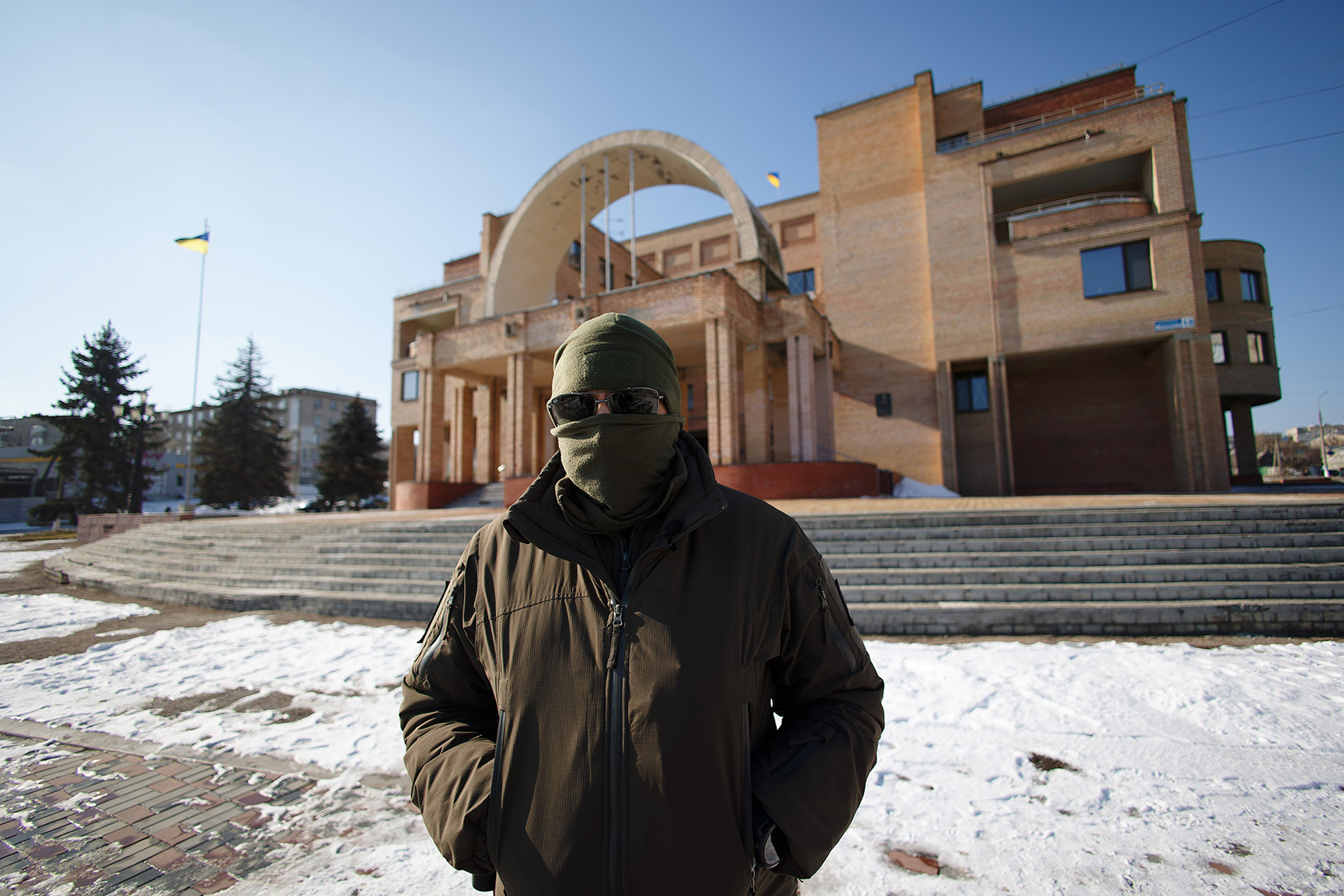
The Arsenal, cleared by battles and losses, became the "starting point" from which the offensive continued.
"From here, we formed a column and entered Balakliia as an armoured group," the Kraken commander says. "About 300 m from the intersection, which was under our control, the enemy was still standing: to the left, in residential buildings, and to the right, in the forest.
Our group quickly swooped into the city."
As Kraken gained a foothold at the Balakliia Administration building, fighting was still taking place on the outskirts. Russian troops were killed by Ukrainian artillery as they fled.
The police entered the city. The Kraken fighters moved on.
Kupiansk: Buryats and crossing the River Oskil
Before the Russians came, there were a lot of good things about Kupiansk. Looking out from the square in front of the administration building, which is on higher ground, there used to be a stunning view of the River Oskil, forests and hills.
Today, the picture is spoiled by buildings in ruins, a cannonade of artillery 12 km away, and the deaths of local civilians.
As he watches a column of smoke rising from a strike beyond the river, Vito describes how Kraken liberated the left bank of Kupiansk.
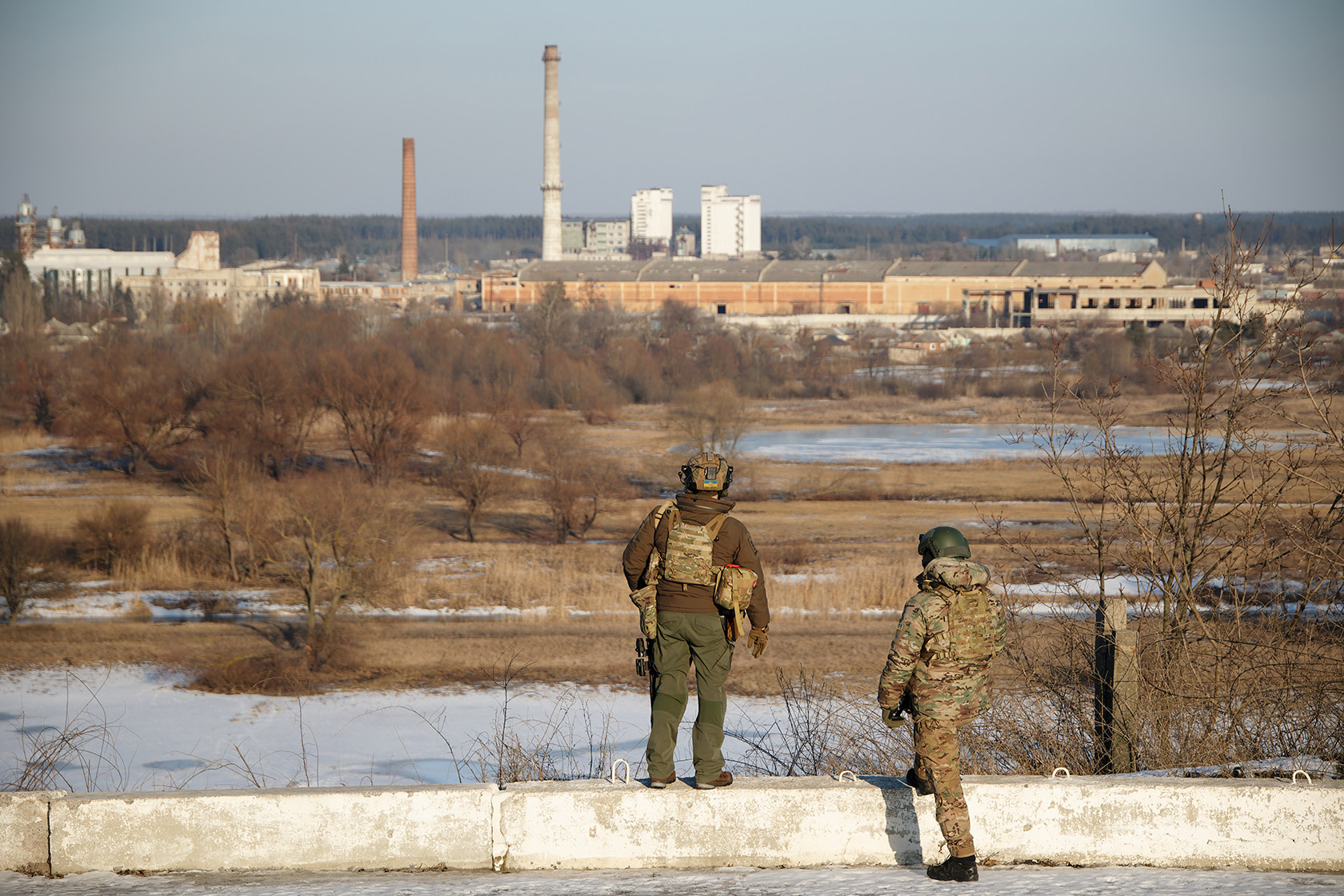
The 92nd Brigade drove the enemy out from the city centre on the right bank. The Russians blew up the bridge, but the Kraken assault groups could have ended up on the side where their adversary had two lines of defence.
"There were Buryats at the checkpoint near the bridge," Vito recalls. "And to the left, in the industrial zone, there were servicemen from the 200th Brigade that we’d encountered before in Ruska Lozova and Pytomnyk.
We had to clear the left bank and make a bridgehead so that the 92nd Brigade could deploy pontoon crossings to further develop the counteroffensive."

Kraken pressed on to Podoly and Kupiansk-Vuzlovyi, where the special forces of Russia’s 24th Brigade were driven out within 24 hours.
Kovsharivka, Novoosynove, Hlushkivka, Kolisnykivka – the liberation of Kharkiv Oblast continued.
"The enemy retreated to Svatove in Luhansk Oblast, where they had already built a robust line of defence," Vito says. "They deployed huge amounts of military personnel and assets to stop the counterattack.
Until then, we’d kept going the whole time, fighting constantly. The enemy couldn’t resist this onslaught; the enemy suffered significant losses, including some good officers.
But we were a bit exhausted too. We’d lost both personnel and equipment, so we weren’t as active as we’d once been. We’d helped the 92nd Brigade, which had become an active defence."
Up next…
31.07.2022. The Russian Defence Ministry reports, via Konashenkov, that 350 Kraken fighters have been killed and 11 pieces of military equipment destroyed by "high-precision missiles" on the territory of Kharkiv.
19.08.2022. Konashenkov claims that "Kraken militants shot 100 soldiers of the Armed Forces of Ukraine who had left their positions to make an example of them."
5.09.2022. A Kraken station in a district of Kharkiv has been "neutralised" (source as above).
7.09.2022. A Russian propagandist claims that another of the unit’s stations has been "destroyed" near Kharkiv.
16.09.2022. The Russian Defence Ministry boasts that they have destroyed a Kraken base in Kharkiv itself.
While the Russians churn out more news about their victory over Kraken, the special forces are preparing for more liberation. The recruitment and training of fighters continues.
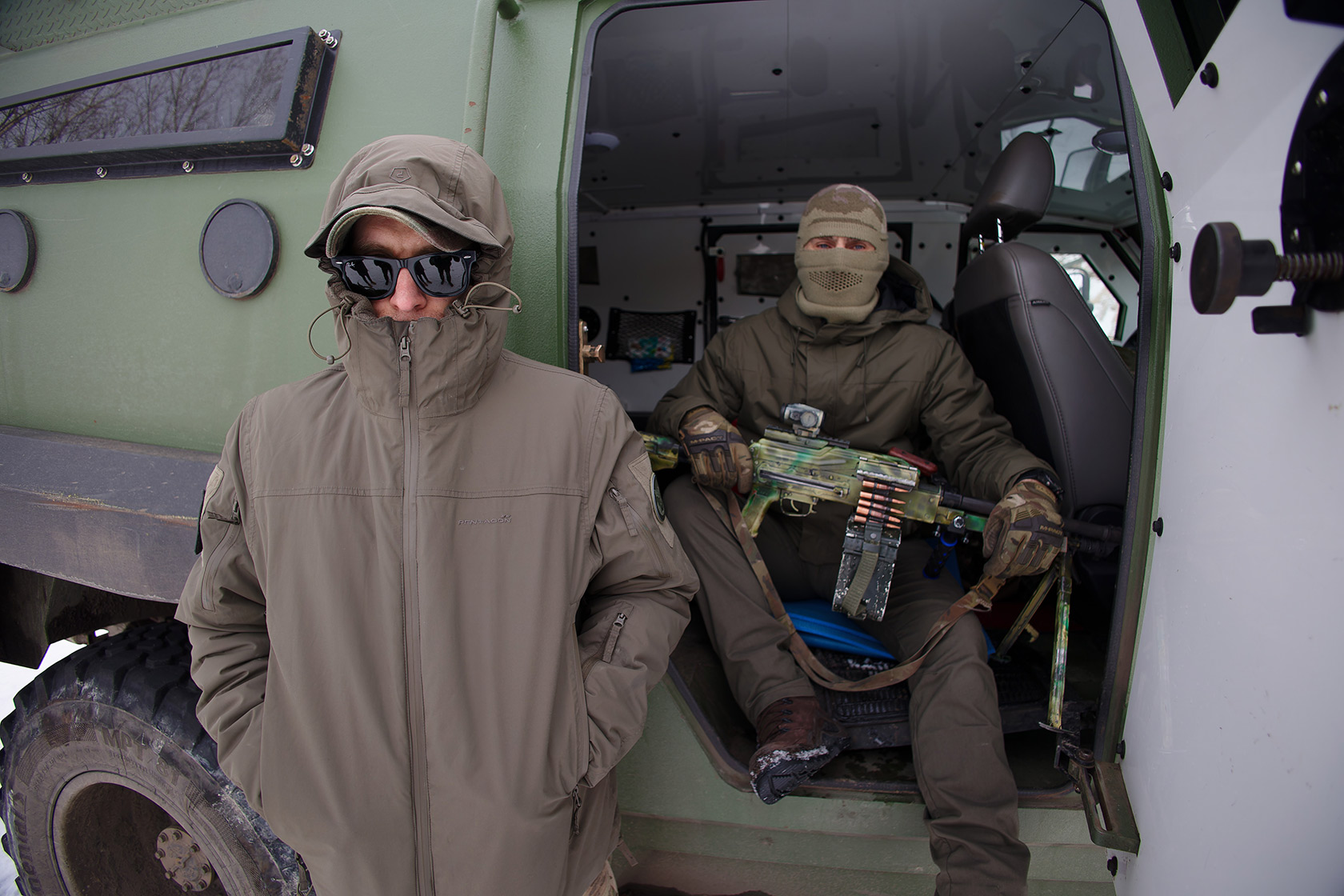

Vito shares some details about the selection process. "Candidates complete questionnaires and undergo testing and a polygraph test. If our internal security has no questions, you are taken to a certain place where you hand over your devices and get undressed. You are examined and given a uniform.
Next, the candidates are taken to the training centre – in a car with no windows," the Defence Intelligence officer continues. "Those who pass the 14-day test stay. That's about 30-35%. The others are brought back in the same closed car."
Asked when and where we can expect a new counteroffensive by the Ukrainian Defence Forces, Vito shrugs his shoulders somewhat slyly: "I don't know. We follow orders.
We special forces, intelligence officers, were once angels. We served God, we fought in God’s army against the forces of darkness," he smiles. "Then God sent us down to earth, took our wings off us, and gave us epaulettes.
He said, ‘You will be my hands, feet and eyes here. You will do what I say.’ We are on a mission to protect our land."
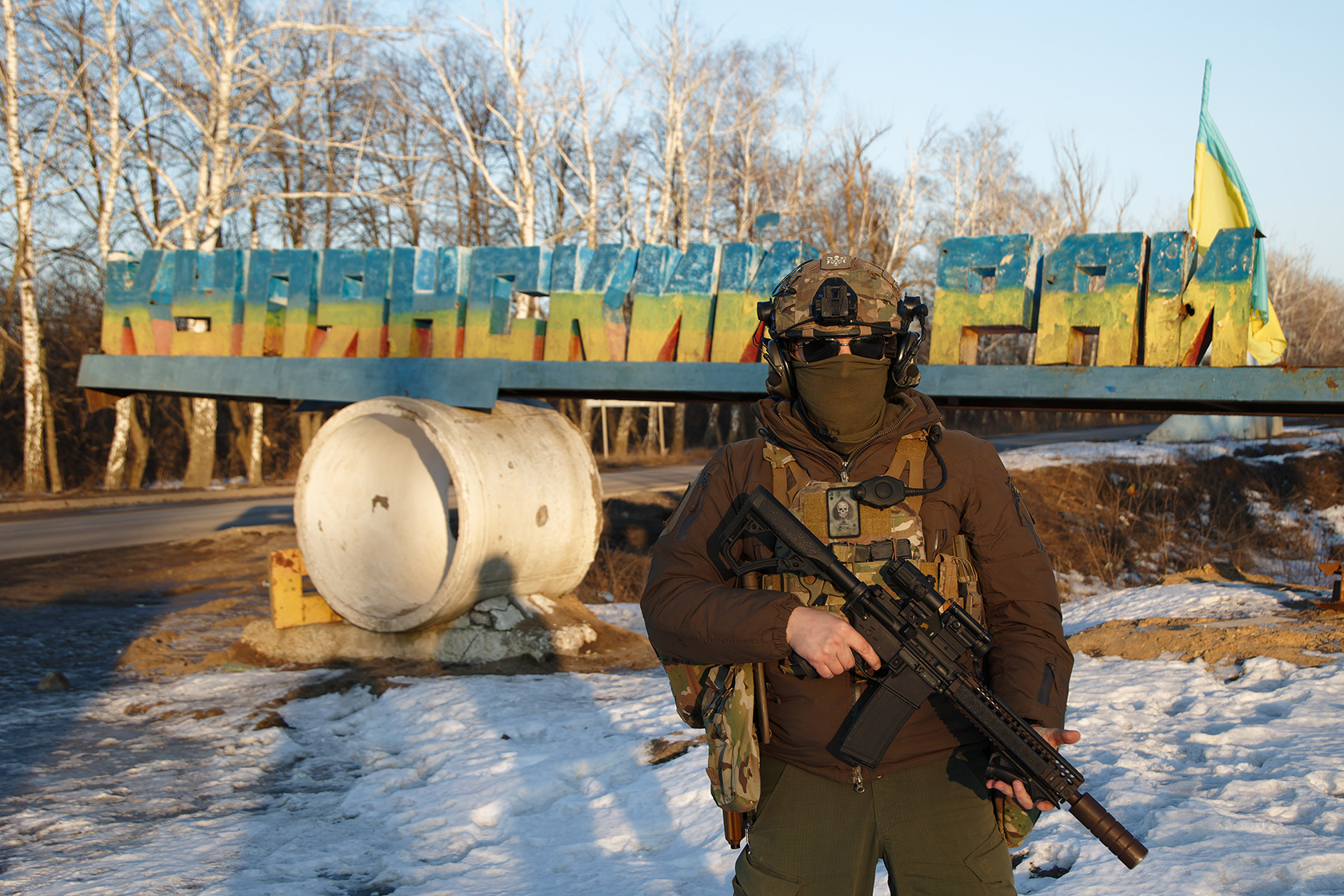
Yevhen Rudenko, Dmytro Larin – UP
Translated by Myroslava Zavadska, Artem Yakymyshyn, Tetiana Buchkovska and Yelyzaveta Khodatska
Edited by Teresa Pearce